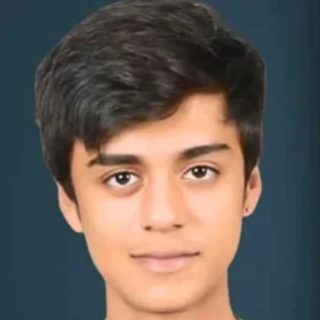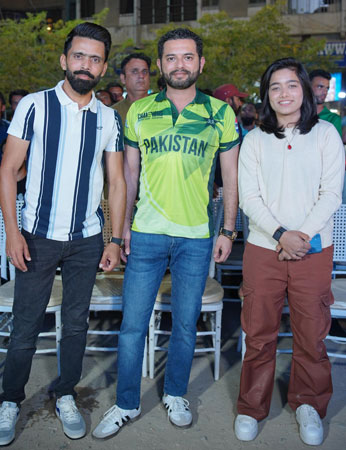
September 6, 1965 in the mirror of history
”
ISLAMABAD: September 6 Pakistan Defense Day reminds us of those martyrs. Who sacrificed their lives for this motherland in 1965, defeating the enemy’s cowardly attack with bravery and bravery.
It is the result of the sacrifices of those martyrs that today we are breathing in free air. Who shed their blood to keep the lamp of freedom burning in 1965 and other wars.
On the night of September 6, 1965, the Indian Army crossed the international border and entered Pakistan without declaring war. The plan of the Indian generals was that on the morning of September 6, Indian tanks would salute the then Prime Minister Lal Bahadur Shastri on the streets of Lahore and in the evening during a cocktail party at the Lahore Gymkhana, they would inform the outside world that they were considered the citadel of Islam. Vali state has been captured by the infidels but India’s intentions and plans got watered down when their forces started receiving news of defeat and retreat on various fronts.
Chondah: Graveyard of Indian Tanks
In the history of wars, after World War II, the biggest battle of tanks was fought at Chonda area of Sialkot. Where the thief Indian army, drunk with power, entered Pakistan with 600 tanks. The heavy retaliatory action of the Pakistan Army destroyed 45 tanks of the enemy. And many tanks were captured. Similarly, 5 field guns were captured and many military prisoners were also taken.
Seeing the turn of the battle, the Indian soldiers lost their senses and left the tanks and started running away. So the Pakistan Army took advantage of the opportunity and captured several posts in the enemy’s territory. That’s why Chondah is called the tank graveyard for Indian tanks.
Front of Lahore:
A company of 150 soldiers of Pakistan Army held back 1500 Indian troops in Lahore for 12 hours and gave ample opportunity to our rear army to strengthen the defense.
Major Aziz Bhatti was guarding another war front in Lahore. At that time, he was posted as a company commander in Barki area of Lahore sector. Major Aziz stood like a lead wall in front of the Indian tanks for five consecutive days. Finally, on September 12, 1965, an Indian tank bullet grazed his chest and he was martyred.
During the September War, the Indian Army carried out 13 attacks in 17 days. Their forces were far more powerful in terms of numbers and war equipment. The Pakistani army was much less than India in terms of numbers and preparation, but Pakistani soldiers risked their lives to prevent the enemy from entering Lahore for 17 consecutive days and crushed their nefarious ambitions.
The achievements of some of these brave descendants of the country are such eternal stories that they will be remembered as eternal examples of courage and bravery for the rest of the world. To pay homage to the sacrifices of such brave martyrs, he was conferred with the country’s highest military honor “Nishan Haider”.
What is Nishan Haider?
Nishan-e-Haider is the highest military honor of Pakistan. This honor is named after the figure of courage and bravery, Haider Karrar Hazrat Ali (RA). This mark is given only to these military men. Who sacrificed their lives for their country with great bravery. Among them, Major Tufail received the Nishan Hyder after being martyred at the age of 44.
The rest of the martyrs who received Nishan Haider were less than 40 years old. The youngest recipient of Nishan Haider was Rashid Minhas. Who took the name Nishan Hyder on martyrdom at the age of 20 years and 6 months.
An interesting fact about this highest military honor that few people know is that the Nishan Haider is made from the metal of weapons captured from enemy forces during wars. So far, 9 Nishan Haiders have come in the Army part and one Nishan Haider in the Pakistan Air Force part, whose names and achievements are briefly mentioned below.
Captain Raja Mohammad Sarwar Shaheed
Raja Muhammad Sarwar was born on 10 November 1910 in Mauza Sanguri Tehsil Gujar Khan District Rawalpindi. He joined the Baloch Regiment as a soldier in 1929 and was promoted to the rank of Captain in the Royal Indian Army on 1 February 1947. At the time of partition, he gave power to the Pakistan Army and came to Pakistan.
In July 1948, when they reached the battle front against the enemy, there was a mountain in the possession of the enemy at Uri. Due to the height, the enemy could inflict maximum damage on the Pakistan Army, so capturing this peak was no less than a challenge.
Muhammad Sarwar Shaheed took up the burden of this deadly task. On the night of July 27, 1948, he moved towards the target with his men. Who was raining shells and bullets from all directions and a handful of soldiers under the leadership of Mohammad Sarwar Shaheed, with a shroud on their head, moved towards the enemy fronts.
Meanwhile, many youths embraced death. In such a situation, a bullet went out tearing the right arm of Mohammad Sarwar. They continued to advance under the hail of bullets, bleeding from their wounds. Finally, they reached the front from where the bullets were being fired. They started cutting the fence. The last wire was about to be cut when the enemy’s firing pierced the chest of Muhammad Sarwar Shaheed.
Major Tufail Muhammad Shaheed

Major Tufail Muhammad was born in Hoshiarpur in 1914. He joined the Punjab Regiment in 1943 and was promoted to Company Commander in the East Pakistan Rifles in 1958.
At that time, the situation in East Pakistan was going out of control. Major Tufail was assigned the mission of action against the Indian forces in Lakshmipur. On August 7, 1958, you wiped out the Indian fronts from the area, creating a history of courage and bravery.
With his bravery, he instilled so much fear in the enemy troops that the Indian soldiers were forced to flee leaving the dead bodies. Major Tufail Muhammad was also martyred in this Dobdo battle. He was awarded Nishan Haider, Pakistan’s highest military award.
Major Raja Aziz Bhatti Shaheed

When the enemy attacked Lahore, at that time Major Aziz Bhatti was posted as a company commander in Barki area of Lahore sector. Major Aziz stood like a leaden wall in front of the Indian tanks for five consecutive days, on 12 September 1965, he took an Indian tank bullet on his chest and drank the cup of martyrdom.
Major Muhammad Akram Shaheed
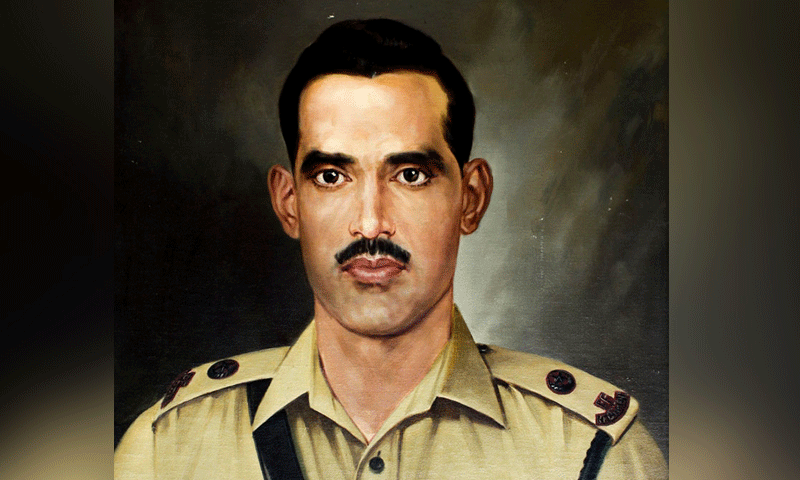
Shaheed Major Muhammad Akram was born on April 4, 1938 in Dinga district of Gujarat, he took charge as a commissioned officer in the Frontier Force Regiment in 1963. When the 1965 war started, Major Akram was working as a captain to protect the city of Lahore. He conducted successful operations against the Indian Army with a small number of soldiers and stopped the enemy from advancing, he was promoted from Captain to Major in 1969.
During the Indo-Pak War of 1971, Major Muhammad Akram, in command of his Frontier Force, halted the advance of the Indian army many times larger than himself for five consecutive days and five nights on the front of the Hilli area of East Pakistan. Major Akram’s courage and bravery on the Hilli front gave such a color that even the enemy could not remain without applauding. He martyred himself on December 5, 1971 while fighting bravely against the enemy. In recognition of this splendid resistance against the enemy, he was awarded the highest military award Nishan Haider.
Pilot Officer Rashid Minhas Shaheed
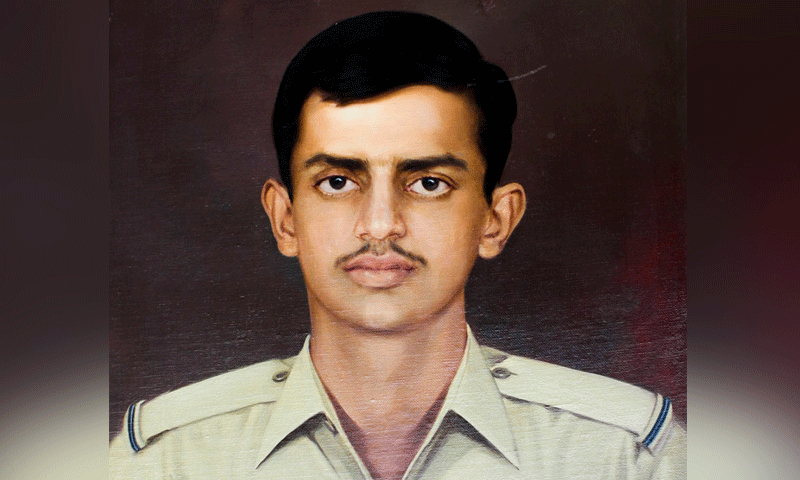
Pakistan Air Force pilot Rashid Minhas was born on February 17, 1951 in Karachi. In March 1971, Rashid Minhas joined the Pakistan Air Force as a commissioned GD pilot. Promoted to the post of Pilot Officer on August 1971.
On August 20, 1971, he was leaving for his first solo flight when suddenly his instructor Mutiur Rehman stopped the plane on the runway and boarded it and turned the plane towards the enemy country, India. He was a spy planted by the Indian Army and wanted to land the aircraft in the enemy country. Rashid Minhas, acting with timely mind and bravery, turned the plane towards the ground. Rashid Minhas was martyred by destroying the enemy’s ambitions due to shipwreck. He is the first officer of Pakistan Air Force to receive the rank of Shahadat and till now the only officer to receive Nishan Hyder.
Major Shabbir Sharif Shaheed
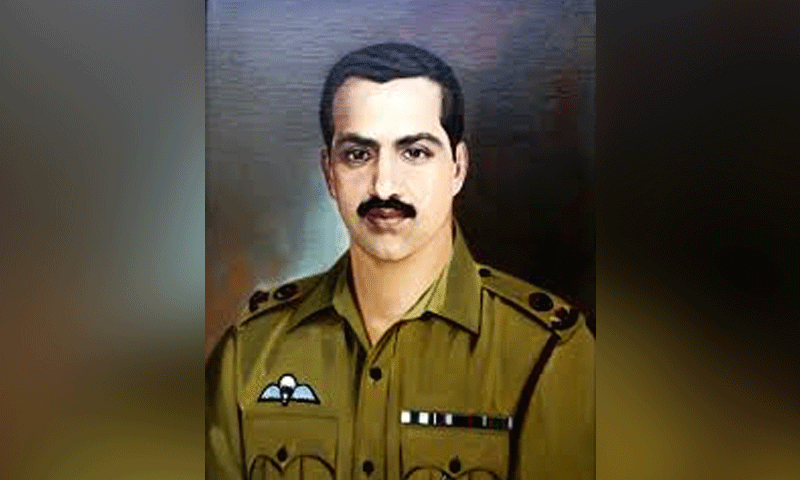
Major Shabbir Shaheed was the elder brother of former Army Chief General Raheel Sharif and nephew of Major Aziz Bhatti Shaheed. He was born on April 28, 1943 in Kanjah area of Gujarat. He joined the army in April 1964. On the occasion of the 1971 war, you were posted on the front as a company commander of Frontier Force Regiment Sulaimanki.
During this time, they inflicted heavy damage on enemy soldiers and tanks. And on December 6, 1971, he offered his life for the nation. At the time of his martyrdom, he was only 28 years old. In recognition of his courage and bravery, the government of Pakistan awarded him the highest military honor Nishan Haider.
Jawan Sawar Muhammad Hussain Shaheed
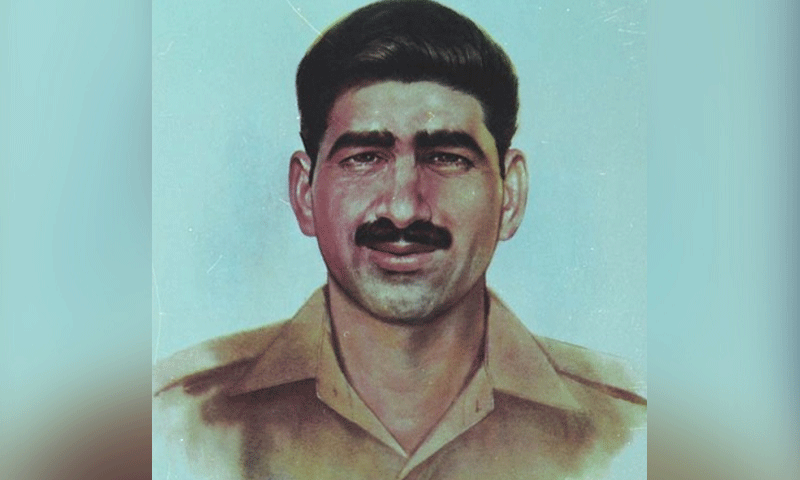
Jawan Sawar Muhammad Hussain Shaheed was born on 18 June 1948 in Dhok Pir Bakhsh. He received his primary education at home and gave his matriculation examination from Devi High School but failed in one subject. Meanwhile, the war of 1965 broke out and he joined the Pakistan Army, rejecting the announcement of general recruitment.
In the war of 1971, he was posted with his unit at Harad. Although he was a driver in the army, he carried out every task of the unit gracefully. Sawar Muhammad Hussain Shaheed on December 5, 1971, on the front of Zafarwal (Shakargarh), regardless of the enemy’s shelling, kept delivering ammunition to his comrades in the trench, and then he himself went to the anti-tank guns and attacked the enemy’s positions. pointed out.
With this deadly action of yours, the most modern tanks of the enemy were destroyed in large numbers. On December 10, 1971, Sawar Muhammad Hussain became a target of enemy machine gun fire and was martyred. Sawar Muhammad Hussain Shaheed has the honor of being the first soldier to receive Nishan Haider, the highest honor of Pakistan Army.
Lance Naik Muhammad Mahfouz Shaheed
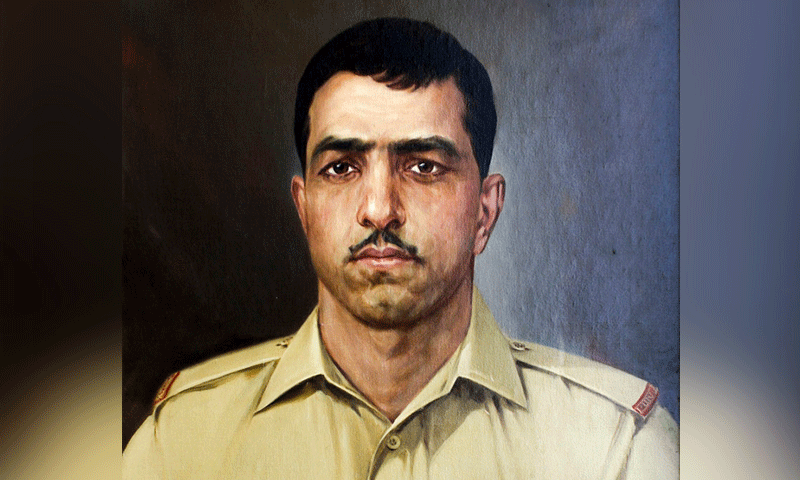
Lance Naik Mohammad Mahfouz Shaheed was born on 25 October 1944 in Pind Malkan (Mafouzabad), a village in Rawalpindi district. You joined Pakistan Army on 25 October 1962. During the war of 1971, Muhammad Mahfouz was posted in Attari sector of Wagah.
When the ceasefire was declared on the night of 16th December, some area of Mill Kunjri was taken over by Pakistan. After the declaration of ceasefire, Pakistani forces did not expect any attack. To liberate the occupied territory, the enemy took advantage of the opportunity and launched a full-scale attack on the night of 17 and 18 December. In the Pakistani army, Lance Naik Mohammad Mahfouz’s platoon number three was at the forefront as the vanguard, so it had to face automatic weapons.
Lance Naik Muhammad Mahfouz was fighting with great courage. At one stage his machine gun was destroyed by an enemy shell hit by a nail. So they sneaked up and picked up the machine gun of a martyred comrade and launched a barrage of attacks on Dasham. Meanwhile, a bullet hit his machine gun and the machine gun missed his hand. Nahte Shaheen grabbed an Indian soldier by the throat. He was about to strangle him to hell when another Indian soldier hit him with a bayonet and martyred him. Lance Naik Muhammad Mahfouz was awarded Nishan Haider, the country’s highest military award, in recognition of his bravery. He is buried at Mahfoozabad.
Colonel Sher Khan Shaheed
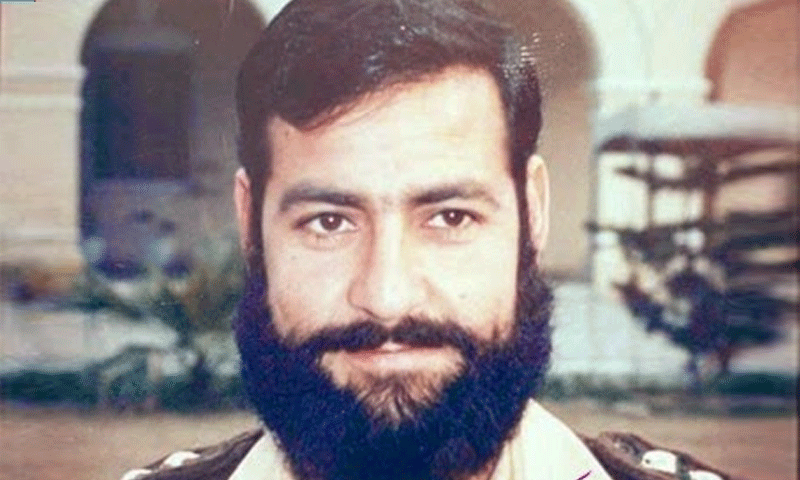
Kargil hero Colonel Sher Khan Shaheed was born on January 1, 1970 in the village of Nawan Kali in Swabi. He joined the Pakistan Army in 1994.
Colonel Sher Khan Shaheed established five security checkpoints at Gultri at an altitude of 17 thousand kilometers during the Kargil battle. With the help of these outposts it was easy to keep an eye on every move of the enemy. The Indian army attacked these checkpoints several times with the intention of capturing them. And each time Colonel Sher Khan along with his comrades defeated every attack of the enemy.
Disturbed, the enemy attacked the outposts with full force and two battalions of troops. Colonel Sher Khan had only 21 but Sher Dil Sepoys. So instead of surrendering, he fought the enemy bravely. And sent many Indian soldiers to hell.
Colonel Sher Khan not only forced the enemy to run back but reached their base camp and was martyred while fighting. His bravery was also recognized by the Indian Army. The Government of Pakistan awarded him Nishan Haider, the highest military award, in recognition of his bravery.
Havaldar Lalik Jan Shaheed
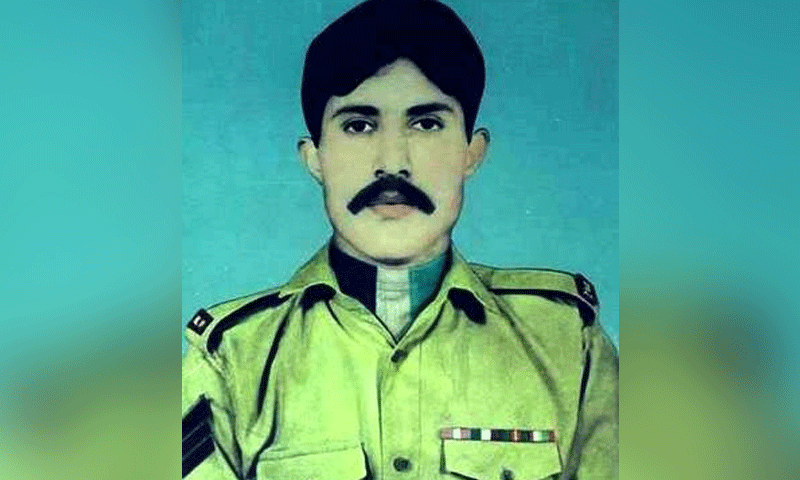
The post at Tiger Hill which Captain Colonel Sher Khan had won before his martyrdom. A constant struggle was necessary to hold on to it. Havaldar Lalak John was a fearless and brave soldier of the infantry. The enemy wanted to get this post at any cost, so Lalak Jan’s post was attacked twice, but he was defeated by this brave hero and the enemy failed in two consecutive night attacks leaving piles of his dead. It kept falling back. However, on July 7, the enemy fired heavily with artillery at the post of Havaldar Lalak Jan. In which Havaldar Lalik was seriously injured and martyred. In recognition of your courage and bravery, the government of Pakistan awarded you Nishan Haider.
”


